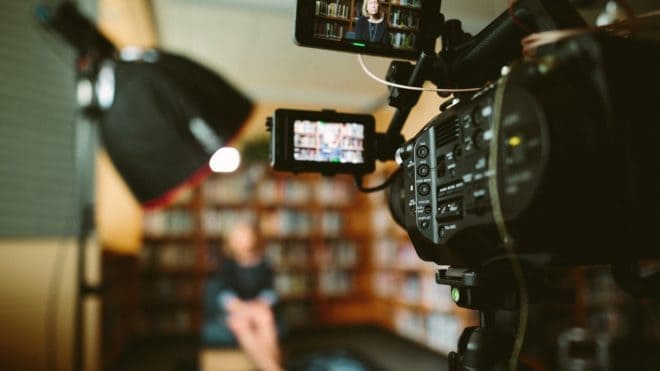Podcasting has been around for decades in various forms, but it’s in recent years where they have really taken off as a popular form of content to consume. There are podcasts in a huge variety of industries and specific niches that have their own topics, format and structure. As podcasts become so popular and widely created, content creators are always looking for new ways to be unique and build an audience.They use the best podcasting tool available in the market to make it perfect. Video are one of the ways that people are going further with their podcast content, offering audiences an extra way for them to engage and consume what they have to offer.
Here are some of the main types of video podcasts and how they can be created…
Types of video podcasts
-
Static image recording
This type of video podcast is the easiest to create by far, but not necessarily advisable. It simply involves converting your podcast audio file into a video file and using a static image, such as your brand logo to show on the screen. While this allows podcasters to offer their podcasts on popular video sharing platforms like YouTube, it’s viewed as a cop-out and can quite frankly annoy your audience and cause them to click off. People browsing YouTube for a video podcast are doing so because they want videos to watch, not because they want to listen to a piece of audio and look at a static image. It may be easy to do but it doesn’t look good for your brand.
-
In-studio recording
A popular type of video podcast is in-studio recordings, whereby a camera is set up to record footage of the studio while a podcast is recorded. It’s a great but simple way to show people a ‘behind the scenes’ view into your podcast where audiences can see your setup, facial expressions, body language and more easily gauge your emotions. While a podcast without video can be just as entertaining, video allows your audience to see the hard work that goes into recording and form an emotional connection with the speakers easier than through just hearing their voice.
-
Remote recording
These types of video podcasts are especially suitable for the current times, due to them not requiring the speakers to be in one place. Remote recordings allow you to show each speaker from a remote location using IP cameras, which can then be put together onto one screen so everyone’s faces are visible – ideal for recording podcasts in the middle of a pandemic.
-
B-roll recording
Last but not least, B-roll recordings involve showing the speakers talking, while also mixing in other footage that relates to what’s being said. For example, if you mention a famous movie reference, meme or even a TikTok in your podcast, you can insert actual footage for your listeners/viewers to see to add to the effect.
Creating your video podcast
There are a few key aspects to consider when setting up, recording and editing a video podcast:
Setting
Make sure the backdrop and setting you choose to record in front of is clean, tidy, professional and that it represents your brand. Even if you are remote recording from your own homes, make sure all speakers have a professional setting to record in to avoid a messy or chaotic background from ruining the overall effect and professionalism of your discussion.
Image quality
If you’ve decided to create a video podcast rather than just offering audio, you need to make sure you have the resources and equipment to do it in the right way. While a smartphone can do the trick, if your video is blurry, buffers or is slow to load, the video can end up doing more harm than good. Make sure all your speakers faces and body language is visible to have the desired effect.
No matter how expensive your recording device is, if you don’t have a professional video hosting platform to support your content, you won’t be able to build an audience. Zidivo offers a video hosting platform for you to embed your video podcasts on any and as many webpages as you like. You can even monetise your videos to generate revenue from your podcasts and restrict who has access based on their location and more.
Be aware (but not too aware)
Podcasts began as being solely audio recordings for people to listen to but the rise of video podcasts has meant old-school podcasters need to adjust and be a lot more aware of themselves when recording. Be aware of the camera in terms of your surroundings, body language, and facial expressions, all of which are less important when sticking to audio-only.
Editing
Your podcasts can be as high-production and edited or as uncut and ‘real’ as you like. You can add animations or cutaways to certain people to highlight important information, or keep it completely raw and unedited. Either way, it’s important to make sure your video matches the audio files completely all the way through – there is nothing worse as a viewer than watching a video where the audio isn’t in sync. Why not use colour grading to make your background and speakers pop and add your logo to the corner to benefit your brand awareness too?
